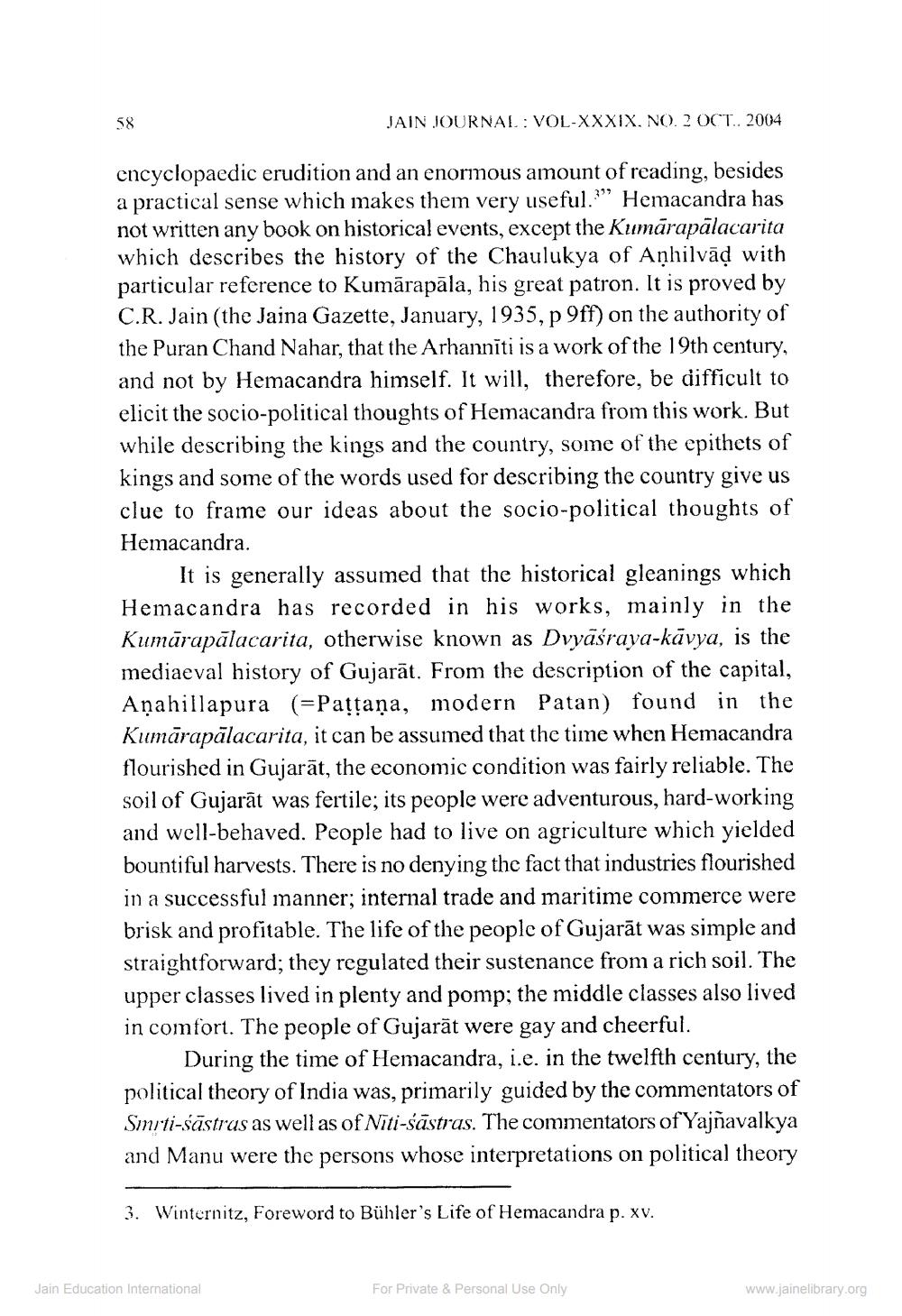________________
58
JAIN JOURNAL VOL-XXXIX. NO. 2 OCT. 2004
encyclopaedic erudition and an enormous amount of reading, besides a practical sense which makes them very useful." Hemacandra has not written any book on historical events, except the Kumārapālacarita which describes the history of the Chaulukya of Anhilvāḍ with particular reference to Kumārapāla, his great patron. It is proved by C.R. Jain (the Jaina Gazette, January, 1935, p 9ff) on the authority of the Puran Chand Nahar, that the Arhannīti is a work of the 19th century, and not by Hemacandra himself. It will, therefore, be difficult to elicit the socio-political thoughts of Hemacandra from this work. But while describing the kings and the country, some of the epithets of kings and some of the words used for describing the country give us clue to frame our ideas about the socio-political thoughts of Hemacandra.
It is generally assumed that the historical gleanings which Hemacandra has recorded in his works, mainly in the Kumarapalacarita, otherwise known as Dvyäśraya-kāvya, is the mediaeval history of Gujarat. From the description of the capital, Aṇahillapura (=Paṭṭana, modern Patan) found in the Kumarapalacarita, it can be assumed that the time when Hemacandra flourished in Gujarat, the economic condition was fairly reliable. The soil of Gujarat was fertile; its people were adventurous, hard-working and well-behaved. People had to live on agriculture which yielded bountiful harvests. There is no denying the fact that industries flourished in a successful manner; internal trade and maritime commerce were brisk and profitable. The life of the people of Gujarat was simple and straightforward; they regulated their sustenance from a rich soil. The upper classes lived in plenty and pomp; the middle classes also lived in comfort. The people of Gujarat were gay and cheerful.
During the time of Hemacandra, i.e. in the twelfth century, the political theory of India was, primarily guided by the commentators of Smrti-sāstras as well as of Niti-sāstras. The commentators of Yajnavalkya and Manu were the persons whose interpretations on political theory
3. Winternitz, Foreword to Bühler's Life of Hemacandra p. xv.
Jain Education International
For Private & Personal Use Only
www.jainelibrary.org




